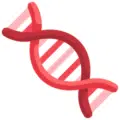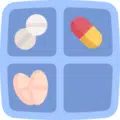Author(s)
Michelle Piel, PharmD, BCACP
Amy Robertson, PharmD
Reviewed By
Autumn Bagwell, Pharm.D., BCPS, AAHIVP
Robert C. Dombrowski, Pharm.D., BCPS
When you reach a certain age, bowel cleansing becomes a necessary poison. Colorectal cancer is the third most common type of cancer in the United States with an estimated 95,270 new colon and 39,220 new rectal cancer diagnoses for 2016. More importantly, colorectal cancer (CRC) is the second most common cause of cancer-related mortality in the United States. Screening is imperative because the early stages of CRC are often asymptomatic1 and when combined with appropriate follow-up can reduced CRC mortality.2 The U.S Preventative Services Task Force (USPSTF) recommends initial screening for CRC at age 50 followed by routine screening until age 75 for average-risk men and women. Current USPSTF guidelines do not recommend one screening test over another and no randomized head-to-head trial has demonstrated a strong efficacy advantage of one test over another.3
Colonoscopy is an effective and widely employed screening option for CRC. Potential advantages of colonscopies are that positive findings during the procedure can lead to quicker diagnosis and screening is less frequent — every 10 years if the results are negative.3 Disadvantages associated with colonoscopies include anxiety, test preparation, the necessity of anesthesia, and potential dehydration.3 Suboptimal bowel preparation is a problem in more than 20% of colonoscopy procedures, which reduces adenoma detection rates (ADR).4-6 Day-before, split-dose, and same-day regimens are options for colon cleansing prior to a colonoscopy.7 Is one better than another in terms of tolerability and colorectal cancer detection?
Radaelli and colleagues recently published a multi-center, randomized, investigator-blinded superiority study which evaluated a split-dose bowel preparation regimen versus a day-before regimen. Patients 50-69 years of age with no recent history of a colonoscopy (≤ 5 years) and with a positive fecal immunochemical test (FIT) from a community-based screening program were eligible for enrollment. Pertinent exclusion criteria included history of a colonoscopy in the past five years, history of CRC, colonic adenomas or inflammatory bowel disease, end stage cardiovascular, pulmonary, renal, or liver disease, history of colonic resection, use of antithrombotic medications, and a contraindication to use of bowel preparation products. Study participants were given a two-liter hypertonic polyethylene glycol (PEG) solution with instructions to stop solid food consumption after lunch on the day prior to their colonoscopy. Randomization in a 1:1 fashion placed participants in a split-dose group (SDG) or day-before group (DBG). SDG participants were to consume one liter of PEG solution mixed with water in the evening prior to their colonoscopy around 20:00 and the second liter 4 hours prior to the colonoscopy. DBG participants consumed the entire two liters of PEG solution the evening before the colonoscopy — one liter around 18:00 to 19:00 and the second three hours later. Staff members who were not involved in the colonoscopy procedures provided preparation instructions to participants. Subsequently, patients and staff members were instructed to avoid disclosure of preparation methods to the endoscopist performing their colonoscopy. Procedures were scheduled between 10:00 and 12:00. If polyps were found, they were removed and sent for histological assessment.
ADR was the primary outcome for this study, defined as the number of participants with at least one adenoma. Additional outcomes included advanced ADR per-patient (at least one advanced adenoma); number of adenomas and advanced adenomas with a per-polyp analysis (number of detected lesions in each group divided by the total number of patients); the quality of bowel cleansing; and patient compliance, acceptability, and tolerability with the bowel prep regimen. Unblinded nurses administered questionnaires to each study participant just before their colonoscopy. Questions asked about compliance with the bowel prep regimen, difficulties consuming the prep product, sleep the night before the procedure, travel interruptions to the procedure, fecal incontinence, willingness to repeat, and adverse effects ranked on a scale from 0-3 with 0 indicating no distress and 3 indicating severe distress. Blinded endoscopists assessed the quality of bowel cleansing with the Harefield Cleansing Scale (HCS), a validated tool for grading bowel cleansing. Grades A and B indicate “successful” cleansing, while grades C and D indicate poor cleansing.8
To detect a 10% absolute increase in adenoma detection with the SDG, the investigators calculated that 345 participants were needed in each group. Baseline characteristics were similar between groups. The primary outcome revealed a significantly larger proportion of subjects in the SDG with at least one adenoma detected when compared to the DBG (53% versus 40.9%; p = 0.002). In addition, the study revealed a significantly higher rate of adenomas per patient with 1.15 detected in the SDG compared to 0.8 in the DBG (p < 0.001). Significantly more advanced adenomas were detected in the SDG when compared to the DBG (p = 0.001). The split-dose regimen significantly improved the quality of bowel cleansing based on the Harefield Cleansing Scale (p=0.001).8 See Table 1.
Table 1. Efficacy Outcomes
|
|
Split-Dose Group |
Day-Before Group (n = 345) |
p-value |
|
Adenoma prevalence and characteristics |
|||
|
Subjects with > one adenoma, n (%) |
183 (53.0) |
141 (40.9) |
0.002 |
|
Subjects with > one advanced adenoma, n (%) |
91 (26.4) |
69 (20.0) |
0.047 |
|
Total number of adenomas, n |
398 |
276 |
|
|
Adenomas per subject, mean (SD) |
1.15 (1.48) |
0.80 (1.24) |
<0.001 |
|
Total number of advanced adenomas, n |
123 |
78 |
|
|
Advanced adenomas/subject, mean (SD) |
0.36 (0.64) |
0.22 (0.46) |
0.001 |
|
Quality of bowel cleansing |
|||
|
Success (HCS grade A or B), n (%) |
329 (95.4) |
307 (89.0) |
0.001 |
|
Grade A – very good/excellent, n (%) |
275 (79.7) |
189 (54.8) |
<0.001 |
|
Grade B – good, n (%) |
54 (15.7) |
118 (34.2) |
|
Significantly fewer patients in the SDG reported side effects of nausea/vomiting, abdominal pain, or bloating. Significant improvements were seen in percentage of solution intake, difficulty in solution intake, and quality of sleep in the SDG compared to the DBG. Rates of serious adverse events were similar between groups. See Table 2.
Table 2. Safety and Tolerance Outcomes
|
|
Split-Dose Group |
Day-Before Group |
p-value |
|
Compliance, tolerance and acceptance rates |
|||
|
Percentage of solution intake |
|
|
0.048 |
|
Optimal: the whole solution, n (%) |
317 (91.8) |
298 (86.4) |
|
|
Fair: ≥ 75% of the solution, n (%) |
24 (7.0) |
43 (12.4) |
|
|
Poor: < 75% of the solution, n (%) |
2 (0.6) |
2 (0.6) |
|
|
Difficulty in solution intake |
|
|
0.032 |
|
No distress, n |
214 |
171 |
|
|
Mild distress, n |
97 |
123 |
|
|
Moderate or severe distress, n |
32 |
49 |
|
|
Quality of sleep |
|
|
0.005 |
|
No distress, n |
41 |
17 |
|
|
Mild distress, n |
276 |
287 |
|
|
Moderate or severe distress, n |
26 |
39 |
|
|
Adverse events |
|||
|
Nausea/vomiting |
|
|
0.038 |
|
No distress, n |
253 |
242 |
|
|
Mild distress, n |
79 |
71 |
|
|
Moderate or severe distress, n |
13 |
31 |
|
|
Abdominal pain |
|
|
<0.001 |
|
No distress, n |
296 |
257 |
|
|
Mild distress, n |
39 |
67 |
|
|
Moderate or severe distress, n |
8 |
19 |
|
|
Bloating |
|
|
<0.001 |
|
No distress, n |
266 |
218 |
|
|
Mild distress, n |
59 |
91 |
|
|
Moderate or severe distress, n |
18 |
34 |
|
It should be noted that the authors did not provide baseline characteristics related to CRC risk factors such as race, family history of CRC, history of diabetes, or lifestyle characteristics such as tobacco use and alcohol intake. Endoscopists may have been able to guess which dosing schedule was used given the effect of a split-dose regimen on removal of mucus in the colon on the day of the procedure. The authors warn against generalizing the findings to average-risk patients given the inclusion of older, higher-risk patients with a positive FIT in this study. Morevoer, patients with a history of CRC or colonic adenomas were excluded, which limits extrapolation of the results to these higher-risk patient populations.
The results from this study compliment the results of other trials which found improved colon cleansing with split-dose bowel preparation regimens.9-12 However, quality of cleansing is a subjective measure. The key strength of this study was the use of ADR as the primary endpoint. This study clearly shows a positive relationship between split-dose bowel preparations and improved ADR. More importantly, the split-dose bowel regimen resulted in a significantly higher detection rate for advanced adenoma — lesions that are more likely to progress to CRC.13 A previous study designed to investigate the link between ADR and CRC diagnoses found a 3.0% decrease in the risk of cancer for every 1.0% increase in ADR.14 Theoretically, improvements in ADR — particularly advanced adenomas — will lead to decreased CRC mortality.
Given the clinically important improvements in ADR observed, this study strengthens the evidence for using split-dose colonoscopy preparations. Current guidelines from the American Society of Gastrointestinal Endoscopy (ASGE), the European Society of Gastrointestinal Endoscopy (ESGE), and the US Multi-Society Task Force on Colorectal Cancer all strongly recommend split-dose bowel preparations prior to colonoscopy procedures.15-17 If a colonoscopy is scheduled for the afternoon, guidelines suggest a same-day bowel preparation regimen as an alternative.17 Despite compelling data and uniform recommendations in clinical practice guidelines to use split-dose bowel preparation regimens, uptake by endoscopy centers and providers has been slow.17-18 One recent study found that fewer than 1 in 5 of the surveyed endoscopy facilities routinely used split-dose bowel preparations.18
With the low acceptance rates of split-dose regimens, how can pharmacists change current practice and promote CRC screening? To achieve adequate bowel cleansing, patients must take unpleasant bowel preparation regimens. Community and ambulatory care pharmacists are frontline health care professionals who can help patients understand the bowel cleansing process including proper administration, timing, tolerability, and successful completion. They can collaborate with gastroenterologists and endoscopy facilities in their communities by providing education regarding ideal preparation regimens. Some patients may delay or avoid CRC screening due to concerns about or based on past experiences using a day before bowel prep regimen. Given that split-dose regimens are better tolerated and more effective, it is important to serve as a patient advocate.
Tell us about your experiences educating patients on proper bowel prep. What strategies can pharmacists implement to increase split-dose bowel prep use?
- American Cancer Society. Cancer Facts and Figures 2016. Atlanta: American Cancer Society; 2016. Available from: http://www.cancer.org/acs/groups/content/@research/documents/document/acspc-047079.pdf.
- Shaukat A, Mongin SJ, Geisser MS, et al. Long-term mortality after screening for colorectal cancer. N Engl J Med 2013;369:1106-1114.
- US Preventive Services Task Force. Screening for colorectal cancer: US Preventive Services Task Force recommendation statement. JAMA 2016;315(23):2564-2575.
- Harewood GC, Sharma VK, de Garmo P. Impact of colonoscopy preparation quality on detection of suspected colonic neoplasia. Gastrointest Endosc 2003;58:76-79.
- Froehlich F, Wietlisbach V, Gonvers JJ, et al. Impact of colonic cleansing on quality and diagnostic yield of colonoscopy: the European Panel of Appropriateness of Gastrointestinal Endoscopy European multicenter study. Gastrointest Endosc 2005;61:378-384.
- Sherer EA, Imler TD, Imperiale TF. The effect of colonoscopy preparation quality on adenoma detection rates. Gastrointest Endosc 2012;75:545-553.
- PL Detail-Document, Comparison of Bowel Preps. Pharmacist’s Letter/Prescriber’s Letter. March 2014.
- Halphen M, Heresbach D, Gruss HJ, et al. Validation of the Harefield Cleansing Scale: a tool for the evaluation of bowel cleansing quality in both research and clinical practice. Gastrointest Endosc 2013;78:121-31.
- Marmo R, Rotondano G, Riccio G, et al. Effective bowel cleansing before colonoscopy: a randomized study of split-dosage versus non-split dosage regimens of high-volume versus low-volume polyethylene glycol solutions. Gastrointest Endosc 2010;72:313-320.
- Cohen LB. Split dosing of bowel preparations for colonoscopy: an analysis of its efficacy, safety, and tolerability. Gastrointest Endosc 2010;72:406-412.
- Mohamed R, Hilsden RJ, Dube C, Rostom A. Split-dose polyethylene glycol is superior to single dose for colonoscopy preparation: results of a randomized controlled trial. Can J Gastroenterol Hepatol 2016;4:1-6.
- Horton N, Garber A, Hasson H, et al. Impact of single- vs. split-dose low-volume bowel preparation on bowel movement kinetics, patient inconvenience, and polyp detection: a prospective trial. Am J Gastroenterol 2016;111:1330-1337.
- Lin JS, Piper MA, Perdue LA, et al. Screening for Colorectal Cancer: A Systematic Review for the U.S. Preventive Services Task Force. Evidence Synthesis No. 135. AHRQ Publication No. 14-05203-EF-1. Rockville, MD: Agency for Healthcare Research and Quality; 2016.
- Corley DA, Jensen CD, Marks AR, et al. Adenoma detection rate and risk of colorectal cancer and death. N Engl J Med 2014;370:1298–1306.
- Saltzman JR, Cash BD, Pasha SF, et al. Bowel preparation before colonoscopy. Gastrointest Endosc 2015;81:781-794.
- Hassan C, Bretthauer M, Kaminski MF, et al. Bowel preparation for colonoscopy: European Society of Gastrointestinal Endoscopy (ESGE) guideline. Endoscopy 2013;45:142-150.
- Johnson DA, Barkun AN, Cohen LB, et al. Optimizing adequacy of bowel cleansing for colonoscopy: recommendations from the US multi-society task force on colorectal cancer. Gastroenterology 2014;147:903-24.
- Paggi S, Amato A, Anderloni, et al. Pre- and post-procedural quality indicators for colonoscopy: a nationwide survey. Dig Liver Dis 2016;48:759-764.






 iForumRx.org is a web-based community of practice designed to inform ambulatory care pharmacy specialists, pharmacy residents, and student pharmacists about high-quality, practice-changing evidence.
iForumRx.org is a web-based community of practice designed to inform ambulatory care pharmacy specialists, pharmacy residents, and student pharmacists about high-quality, practice-changing evidence.